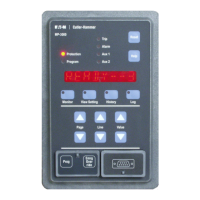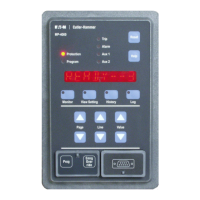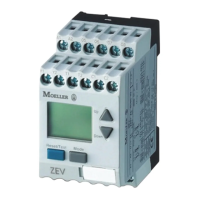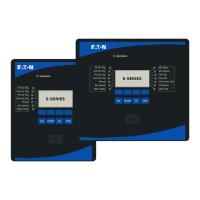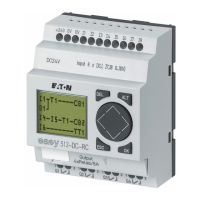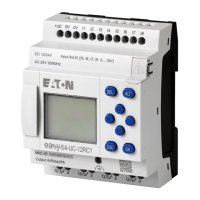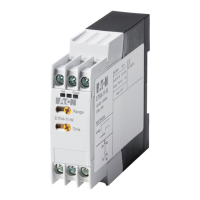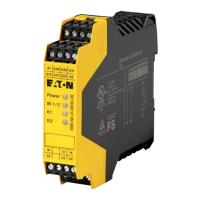For more information visit: www.cutler-hammer.eaton.com
Page 7-3
Effective 10/02 IL17562BH04
• Turn on all ac power.
• Make sure the MP-3000 Protection LED is on, and that the display
says READY—3.
• Follow any startup procedures for the load equipment.
• Start the motor using the external start switch or contacts.
• Using the information supplied by the application engineer or
equipment manufacturer, verify that the motor is operating properly.
• With the motor running, use a clamp-on type ammeter to measure
the ac current on each of the motor phases.
• Verify that the I
A,
I
B,
and I
C
currents, as indicated by the MP-3000 on
the MONT I Page of the Monitor mode are within about 5% of the
ammeter values.
• If the current during this test is well below FLA, or if the cts are far
from the optimum ratio, errors may be larger. This test is intended to
show incorrectly set ct ratios or faulty wiring, rather than precision of
measurements.
• If a ground Ct is connected, check ground current IG. Investigate
the cause of any abnormal ground leakage current flow.
• Check the percent unbalance display %UB for consistency with the
ammeter measurements, given the acceptable error ranges.
• A negative sign on the unbalance display indicates that the relay is
programmed for a reversing motor, and that it believes the motor is
running in reverse. Since an MP-3000 programmed for a reversing
starter won’t trip for reversed phase sequence, this gives a
convenient check that the phase sequence is properly wired.
• If the analog transducer output is connected, determine which
measurement it is transmitting - view Setting P11L1.
• Check that the analog output current corresponds to the displayed
value of the selected parameter.
• If a PowerNet data communications host is connected, upload the
starting current profile and check for coordination with cold-start
protection curves on the PowerNet display.
• It is wise to verify the ability of the MP-3000 to open the contactor
and trip the motor. The easiest way is by remote trip, via remote trip
contact or data communications. Many other internal functions can
be manipulated to force a relay trip. One technique is to connect a
shorting jumper across the relay current terminals for one of the
three phases—this should produce an unbalance trip, or a thermal
trip after some time.

